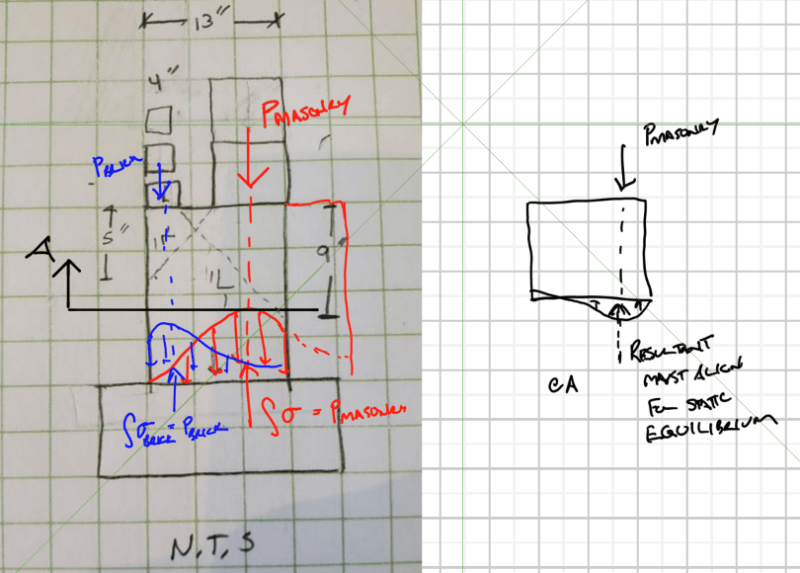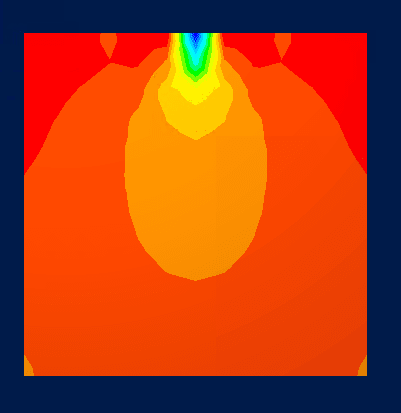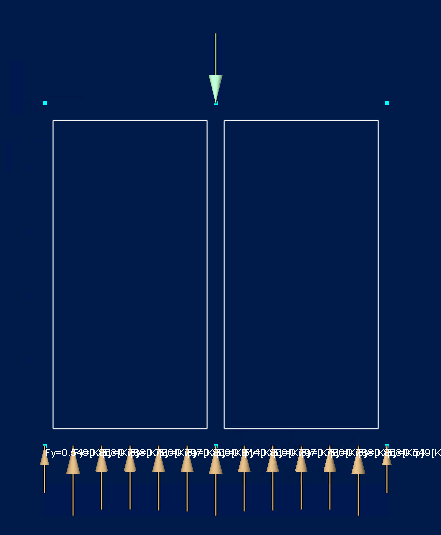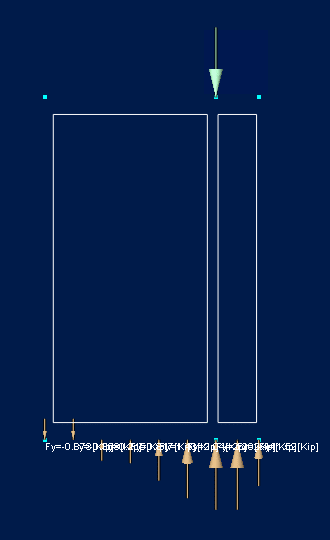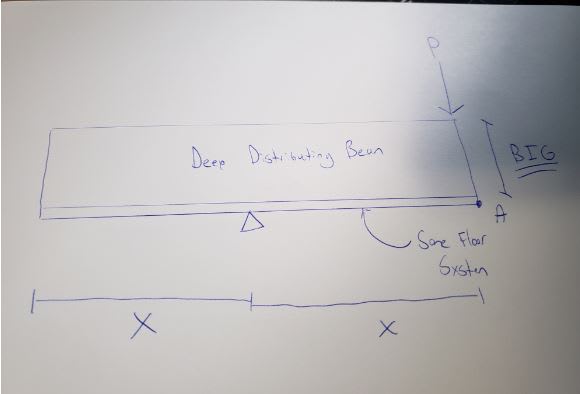EngStuff
Structural
- Jul 1, 2019
- 81
When is it okay to ignore eccentric loads on strip footings with stem walls. I am told at the office to include overturning, but it seems way too conservative and unnecessary.
Here is a scenario, I have a footing with a 13" wide stem wall. See pic below. Hypothetically, if that stem wall is deeper then 9" there should be no eccentric load on the actual strip footing. Thus the strip will see a force on the center, and the bearing force is evenly distributed underneath the strip. No need to check overturning(ignoring wind load and other horizontal loads)
Now, this is an industrial building with a very large load on the masonry wall above the stem wall. The brick goes only 8 feet high. I can see if there was no stem wall, and the masonry and brick go all the way down to the strip footing, there will definitely be an overturning force. but not in this case.
What do you guys think?
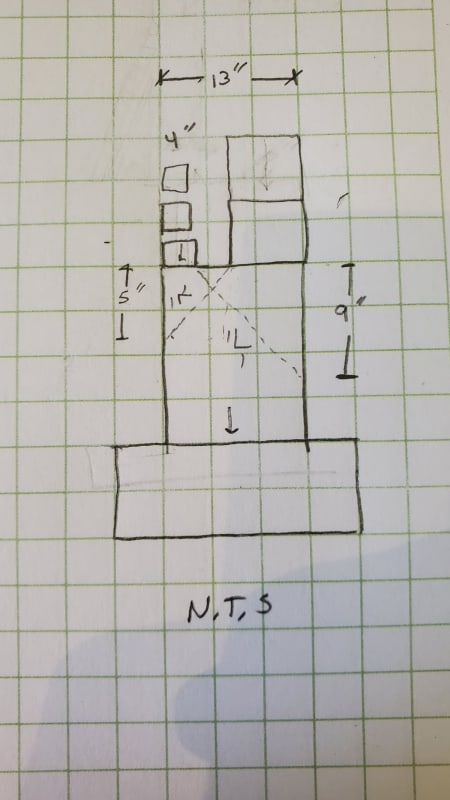
Here is a scenario, I have a footing with a 13" wide stem wall. See pic below. Hypothetically, if that stem wall is deeper then 9" there should be no eccentric load on the actual strip footing. Thus the strip will see a force on the center, and the bearing force is evenly distributed underneath the strip. No need to check overturning(ignoring wind load and other horizontal loads)
Now, this is an industrial building with a very large load on the masonry wall above the stem wall. The brick goes only 8 feet high. I can see if there was no stem wall, and the masonry and brick go all the way down to the strip footing, there will definitely be an overturning force. but not in this case.
What do you guys think?


